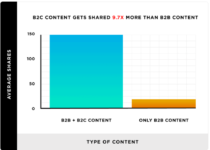16 Effective SEO Techniques to Drive Organic Traffic in 2024
This post was updated September 2023.
Google makes hundreds of changes to its algorithm throughout the year, which means that what worked for last year’s – or last month’s – SEO strategy might not be adequate this year.
If your organic traffic isn’t coming in like before, it’s likely because there have been some tweaks on how Google views content, which can drastically affect search engine rankings.
Luckily, we’re here with 16 actionable SEO techniques that help you improve your organic presence in search engines—covering basic and advanced SEO tips.
6) Semantic Search & Topic Clusters Instead of Keywords
Google’s objective is to understand the intention of its users — what they expect, what they’re looking for and, more specifically, what results on search engines would best help answer their query.
However, to rank your website on the first page of Google, it’s not enough to look at keywords alone; one of the best SEO practices is to look at the context around them. Also referred to as “user intent,” you must pay attention to what your users seek.
Here are two things in particular you should consider:
A) Know Your Target Audience for Semantic Search
The better you know your audience — their location, age, interests, etc. — the better the content you’ll create (and the better your SEO traffic).
For example, suppose your keyword tool shows that “Android” has a search volume of 2,740,000 per month. That’s a lot of people your content could be exposed to, so you’ll need to target it heavily, right? Not necessarily.
People searching for “Android” could fall into several categories:
- Mobile users searching for Android help
- Star Wars fans looking for droids
- Robotics enthusiasts looking for information about Androids
If you don’t understand your target audience, you could risk creating content for all these topics. That won’t win you rankings or readers because you can’t please everyone with a single piece of content optimized for a broad term.
However, by building buyer personas that include the shared traits of your ideal customers, you’ll be better able to zero in on topics that matter to your readers while minimizing the chances of creating content that fails to get results.
Dive Deeper: The Ultimate Guide to Developing Buyer Personas (with Templates!)
B) Organize Content into Topic Clusters
Instead of focusing on standalone keywords, you can improve SEO by organizing all your content into different themes. The topic cluster model, created by HubSpot, works by linking relevant content pieces together into “clusters”:

This entails having these SEO methodologies:
- A pillar page: These are generally your site’s most important pages (for example, on an e-commerce site, this will often be top-level categories) that you want, and can expect, to rank for a broad range of keywords.
- Cluster pages: These are pages that live around and are linked back to their relevant pillar page. They will generally answer questions or cover topics related to the pillar page in more detail.
Here’s a topic cluster around “workout routines”:

This strategy achieves three parts of a successful SEO strategy:
- It satisfies user intent since they get easy access to more detailed information on their topic of interest.
- It turns your site into a better resource for those pillar topics. This is important to Google since its goal is to send users to the best possible page for their search term. When Google views your site as a great resource for a particular topic, odds are you’ll be rewarded with better rankings.
- Each of those cluster pages has the potential for increased Google rankings and drive additional targeted web traffic to your site.
Dive Deeper:
* 5 Steps to Developing Successful Pillar Content
* Quick Guide to Using Topic Clusters to Improve Your SEO
C) Use Semantic Keywords
Why are we talking about keywords as an SEO technique when we’ve told you to focus on topic clusters instead?
Because keywords still matter to Google searches.Organizing content thematically is key, but ignoring keywords is a mistake. Keywords act as signposts to Google’s spiders, signaling topics and providing hints as to the nature of the content on the website.
Semantic keywords are words and phrases that are related to your primary keyword. They help search engines understand the context of your content and improve its relevancy for certain queries.
For example, if you’re writing an article about “SEO techniques,” some relevant semantic keywords could be “search engine optimization,” “content marketing,” “link building,” or “on-page SEO.”
The reason they are important is that using semantic keywords in your content can help you rank for more long-tail keywords:
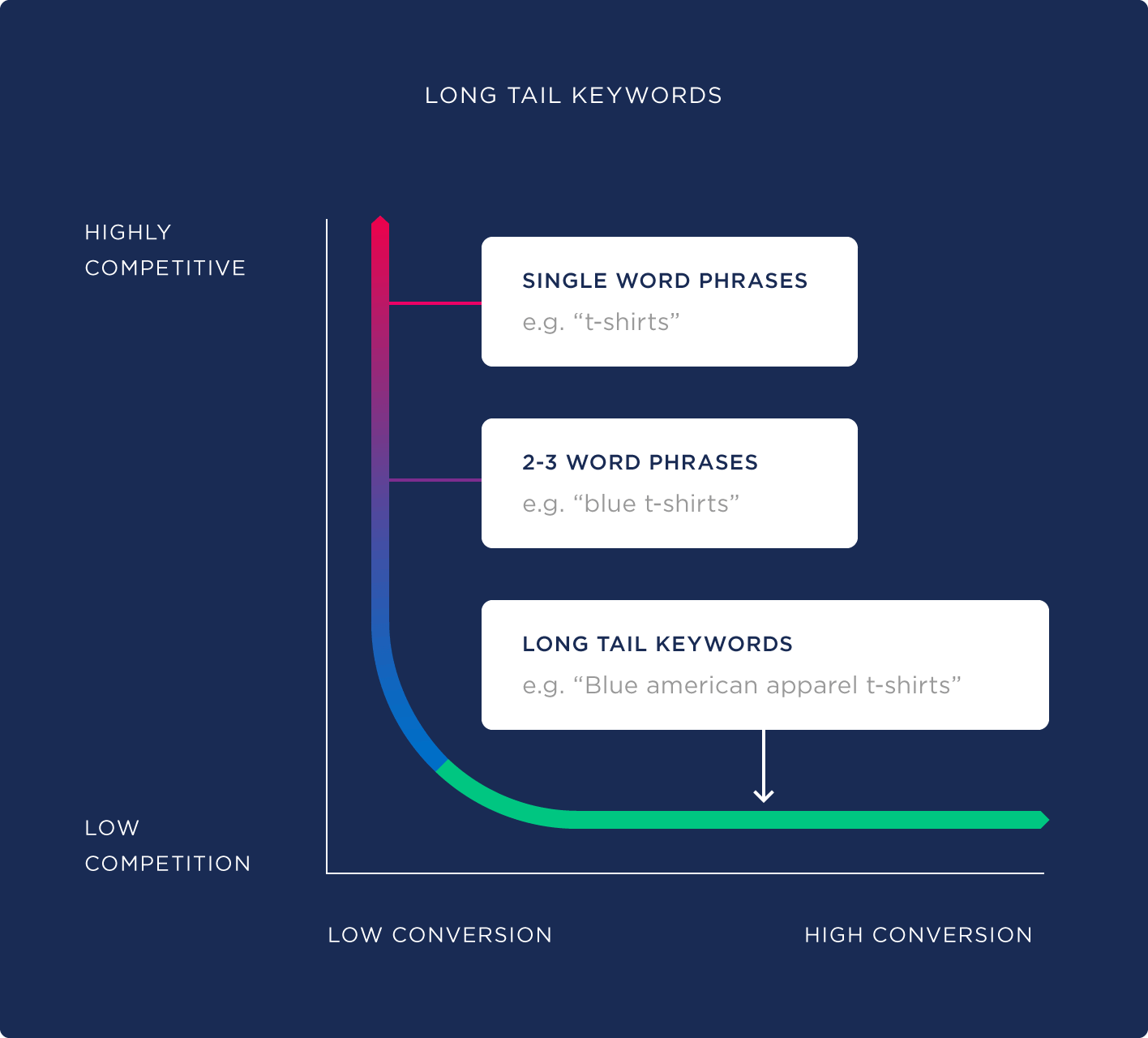
There are several ways to find relevant semantic keywords for your content:
- Use Google’s “searches related to” feature. Simply enter your primary keyword into Google and scroll to the bottom of the page. There, you’ll see a list of related searches that you can use as semantic keywords.
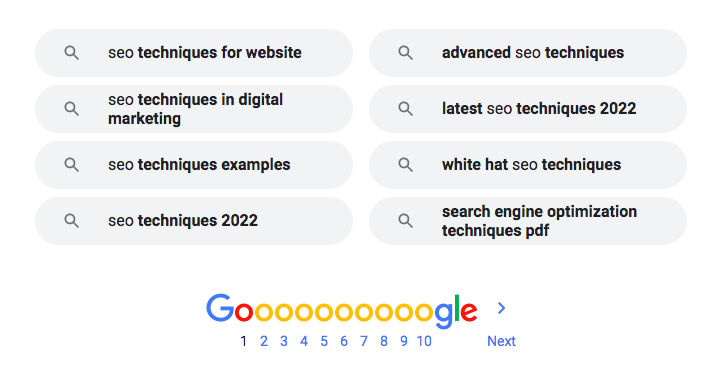
- Use a keyword research tool like Semrush. Enter your primary keyword into the Keyword Magic Tool and click on the “Questions” filter in the left-hand sidebar. This will show you a list of all the questions that people are searching for that are related to your primary keyword.
Check out this 5-minute video How to Use Ahrefs for SEO Analysis (even if you use an alternative keyword research tool like Google Keyword Planner, Semrush, SE Ranking or Mangools, this process is similar):
Dive Deeper:
* SEO Keyword Research Made Easy
* How to Use Google Keyword Planner for Content Creation
* Why You Should Use Long-Tail Keywords in Your SEO Campaign
7) Optimize Your Content for Voice Search
In 2020, there were 4.2 billion voice assistants being used worldwide. By next year, it’s expected to hit 8.4 billion units (a number higher than the world’s population!).
Thus, the search engine has become conversational, so you must optimize your website for voice search.
Here’s how you do it:
A) Use Long-Tail Keywords
Long-tail keywords — those that contain three or more words — play a key role in voice search. To rank for this type of keyword, you’ll need to create content that targets them on your website using the following process:
- Identify one long-tail keyword using this guide (e.g. “how to wash a car”).
- Find lots of semantically related keywords (e.g. “car washing guide” and “best soap for washing a car”).
- Write a long-form, comprehensive blog post that suitably positions those semantically related keywords throughout.
B) Use Structured Data
According to Backlinko, 40% of voice search engine results come from featured snippets. Using structured data can help boost the chances of your pages on your site being used to answer a voice query over a competitor’s on search engine results.
As Ana Gotter explains:
“Schema markups are often used to point to local businesses with snippets of code to help Google understand what your website is about and thus better connect you with relevant searches.”
Here’s an example of how web pages with schema markup for events appear in the local SEO search engine results pages:

To get started, head over to Google’s Structured Data Testing Tool to find out whether you’ve already implemented schema:
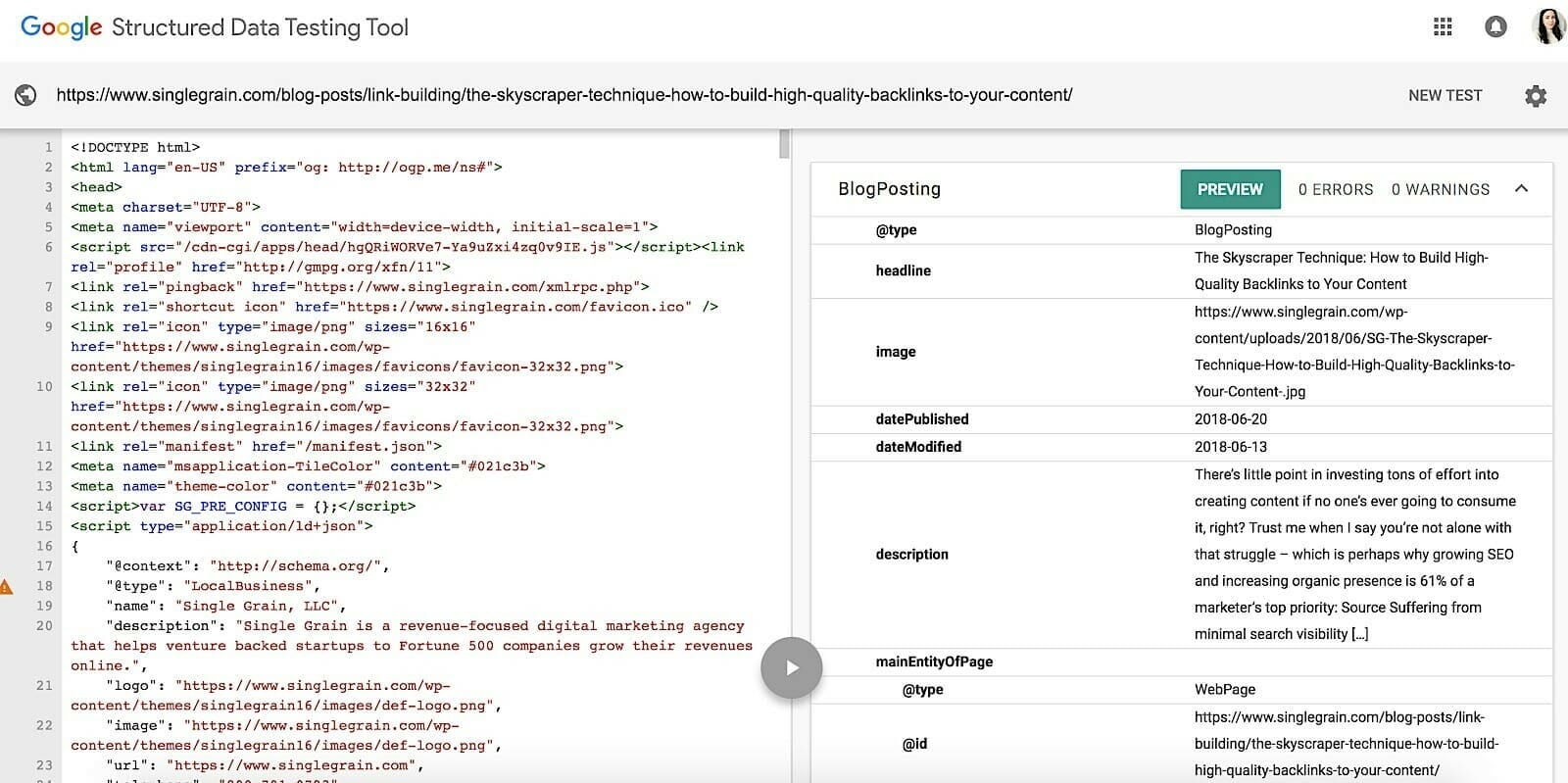
If you haven’t and need more detailed information, check out Google’s guide to Schema markup that explains the type of code you need, and how to implement it.
Dive Deeper:
* Beginner’s Guide to Voice Search SEO
* How to Optimize Your Website for Voice Search and Wearable Tech
8) Optimize Your Headings (Not Just Your Title Tags!)
In case you didn’t know, Google automatically rewrites about 58% of title tags based on a page’s H1 heading.
Google explained that their “new system is producing titles that work better for documents overall, to describe what they are about, regardless of the particular query.”
In other words, if the title tag is poorly written or doesn’t accurately reflect the content of the page, Google may rewrite it to improve the user experience. In particular, it’s is more likely to rewrite title tags that are:
- Too short or too long
- Not relevant to the content of the page
- Too promotional or spammy
- Duplicated across multiple pages
That’s helpful, right? But there’s a caveat. According to Brodie Clark, Google is replacing titles with “header tags, internal links, image alt text, or even made up completely by Google.”
To minimize the chances of Google rewriting your title tags, make sure they accurately reflect the content of your pages with these tips:
- Use the most important keywords in the title tag, but don’t overdo it.
- Keep the title tag short and concise, ideally between 50 and 60 characters.
- Use descriptive language that accurately reflects the content of the page.
- Avoid using promotional language or making claims that you can’t back up.
- Make sure the title tag is unique for each page.
If you need help, this article provides SEO page title formulas for different types of pages to help you improve your blog post ranking:

9) Update or Refresh Your Old Content Regularly
This is a great SEO technique because existing content already has authority and, in some cases, an established readership.
Rather than creating a new post from scratch, boosting an existing post’s performance in search engines results can be a much simpler organic SEO strategy.
The best candidates for content refreshes are time-sensitive content (in other words, subjects like SEO that are constantly evolving) and posts that are getting some organic traffic but have the potential for link building and other tactics.
You can find out how much traffic your content is getting in the Landing Pages section of Google Analytics. Just go to Behavior > Site Content > Landing Pages:

Once there, change the segment you’re viewing to “Organic Traffic” and filter the results using your search bar. For example, if you want to view traffic to content that lives in the /blog subfolder of your site, you just need to put /blog in the search bar.
Once you’re ready to update your older blog posts, you can follow the Single Grain updating guidelines:
- Rewrite the intro and conclusion
- Delete/combine any weak sections
- Research and write as much as you feel would add to the value of the piece
- Update any stats/facts/quotes and make sure there are no broken links or dead links and that all links to sources are no more than ~2 years old
- Replace any outdated or irrelevant images
- Replace any examples/case studies with new, current ones
- Go to Google Search Console to request indexation
Dive Deeper:
* 9 Ways to Repurpose Your Old Blog Content
* Do You Really Need to Write 1,890-Word Blog Posts to Rank on Page 1?
* Why You Should Update Content – Or Risk Losing The Traffic You Have [Case Study]
10) Create Videos with Video SEO
You’ve seen that increasing dwell time is one of the best organic SEO strategies. What better way to do so than by using video?
Besides increasing visitor engagement, video can also help you get more organic traffic from the key moments section:
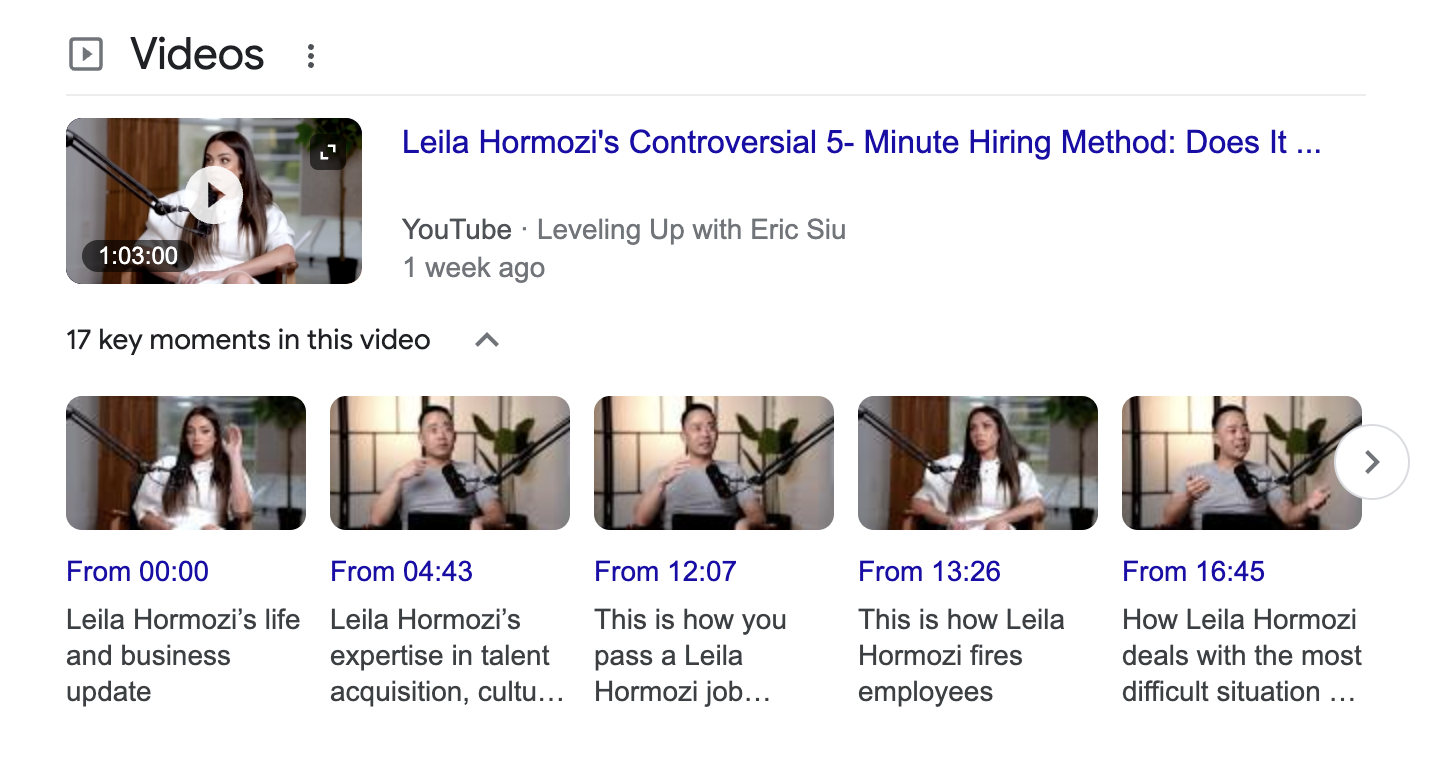
Until recently, Google only ranked YouTube videos in the Suggested Clips, but with the help of the new Seek and Clip data structures, marketers can now rank videos from any site.
To optimize your video content:
- Use relevant keywords in the video title, description, and tags.
- Use high-quality thumbnails to also attract more clicks.
- Use annotations and cards in your videos.
- Create a strong call to action.
- Include video transcripts to make your content more accessible and provide additional text that search engines can crawl.
- Implement proper schema markup for videos to help search engines understand the video’s content better.
- Promote your videos on social media, email and other websites.
- Embed videos on your website to keep users engaged longer, which could positively impact dwell time and, ultimately, SEO rankings.
- Use YouTube ads to reach a wider audience.
To help increase views and subscribers on YouTube, use tools like VidIQ or TubeBuddy.
Dive Deeper:
* 17 Types of Video Content That People Actually Want to Watch
* How to Make a Video That People Will Watch Til the End
* 20 Pre-Production Tips to Create Successful Video Content in 2020
11) Invest In Link Building
Link building is and will always be the core of Google’s search engine ranking algorithm. And creating quality, authoritative and unique content is the best way to get quality links.
The most effective strategy for link building includes:
- Creating unique, valuable and authoritative content and data-driven content that others naturally want to link to.
- Using outreach initiatives, like guest posting or collaborating with influencers, to further bolster your link-building efforts.
- Using tools to analyze your competitors’ backlink profiles can provide insights into potential linking opportunities.
It’s essential to focus not just on the quantity but also on the quality of links, as links from reputable, relevant sites carry more weight.
Furthermore, diversify your link types and anchor text to create a more natural-looking backlink profile. Periodically audit your backlinks to ensure they’re not just high in number but also contribute positively to your SEO objectives.
To make your data-driven content even better, create images and graphics that visualize the info it describes. For example, Curata’s use of data-driven content generated 7x more leads than other content types:

Dive Deeper:
* How – and Why – to Build a Backlink Portfolio
* The Skyscraper Technique: How to Build High-Quality Backlinks to Your Content
12) Optimize Your Internal Links
Internal linking has always been an important (and easy!) ranking factor for SEO, and it continues to be for the coming year.
There are two primary purposes to an internal link strategy:
- To pass and distribute the value of your backlinks to your pages
- To help users navigate to the content most relevant for them
Here are three quick tips and strategies to make the most out of your internal linking:
A) Push TOFU Readers Further Down the Funnel
Most established websites tend to have a lot of top-of-funnel, low-intent traffic from informational keywords:
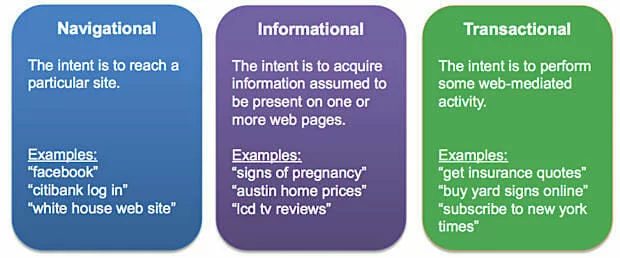
One of the things you can do is use internal links to push people to the next step of the funnel. Let’s say you have website traffic from a definition keyword like “What is brand awareness?”. What’s the next logical website content? Maybe:
- Benefits and importance of brand awareness
- How to measure brand awareness
- Software for measuring brand awareness
It’s a best practice to continue adding internal links in TOFU and MOFU content that push the reader closer to pages that convert and generate revenue.
Dive Deeper: What’s the Right Content for Each Stage of the Marketing Funnel?
B) Use Clear and Descriptive Anchor Text
If the purpose of internal links is to guide search engines and users around the site, then your text anchors need to be descriptive. Make it obvious where the click is going to lead.
Make sure that the anchors differentiate between pages, too. For example, let’s say you have all of these pieces of content on your blog:
- Fashion newsletter examples
- Fitness newsletter examples
- Travel newsletter examples
In that case, avoid using a generic anchor like “newsletter examples,” which is confusing because it could be relevant for several different pages. Instead use the anchor text “travel newsletter examples” to link directly to your post about travel newsletter examples.
The exception might be if the page title or closest subheading gives clear context (e.g. the entire article is about fitness newsletters). It’s still safer to use the full descriptive anchor and requires very little additional effort, like this: Are newsletters profitable?
Dive Deeper: How to Implement Internal Linking for SEO (Step-by-Step)
C) Limit the Number of Internal Links
Search engines recommends using a reasonable number of internal links. However, they don’t provide any real guidance as to what that means.
When you add internal links, you’re indicating to Google which pages are important. In theory, every additional internal link you add will dilute the amount of “PageRank” (no longer an official metric, but the concept is still relevant) passed to other pages receiving links.
Here’s an illustration from Ahrefs to visualize:

Dive Deeper:
* How to Rank Your Brand-New Website When You Don’t Know SEO
* 9 Quick SEO Tactics That Only Take 10 Minutes to Implement
* The Complete White Hat SEO Guide: Google-Validated SEO that Works like Magic!
13) Make Your Content More Visual
Humans love visual content.
For instance, Facebook posts with images receive 230% more engagement than posts without images:

And for web pages, visual content gets 94% more views than non-visual content:

The most common image types that tend to attract links are:
- Graphics
- Infographics
- Photos
- GIFs
With the help of design tools like Canva, you can easily create your professional-level graphics. Alternatively, you can use cheap freelance designers on sites like Fiverr and Upwork.
Besides improving your content, you can rank your images in Google Images, the second-largest search engine in the world.
Image SEO requires optimizing your images’ alt-text and their name:

The alt-text is a tag that you give to your images so that Google’s search engine crawlers can “read” what the image is about. In it, you should include a brief description of the image and a keyword.
14) Target Local Searchers with Landing Pages and Listings
An awful lot of Google searches come from people looking for local information. That could include:
- Local shops
- Opening hours
- Telephone numbers
- Addresses
For brick-and-mortar business owners, local SEO is a must to improve online visibility.
Here are three effective local SEO techniques to capture potential customers who live nearby.
A) Double-Check Your Directory Listings
As powerful as search engines like Google or Bing may be, they still can’t be everywhere at once and sometimes have to rely on additional information from local data sources.
These sources gather, aggregate, and submit relevant data for area businesses — information from physical directories (like Yellow Pages) or scanning business registrations. Google then uses these data aggregators to fill in information gaps in their databases and will also cross-check information to make sure facts are up to date.
Problems arise when aggregators collect out-of-date data, leading Google to list the wrong information on search queries, such as an old address for your business or a disconnected phone number.
That’s why it’s critical to ensure that your physical contact information is current on every online listing you’ve created, including:
- Google My Business: Because Google is the largest search engine, always start with Google My Business, a free-to-use listing service—and update your data accordingly. Be sure to include important details like extra locations, your latest opening hours, and what forms of payment are acceptable.
- Local Directory Management Service: Companies like Moz Local and Yext carry out the painstaking work of scanning countless local directories, interacting with data aggregators, and correcting outdated information.
- Build More Directory Listings Using Local Data Aggregators: Now that you’ve got the information down to a T, roll that out by using a local data aggregator like Bright Local:
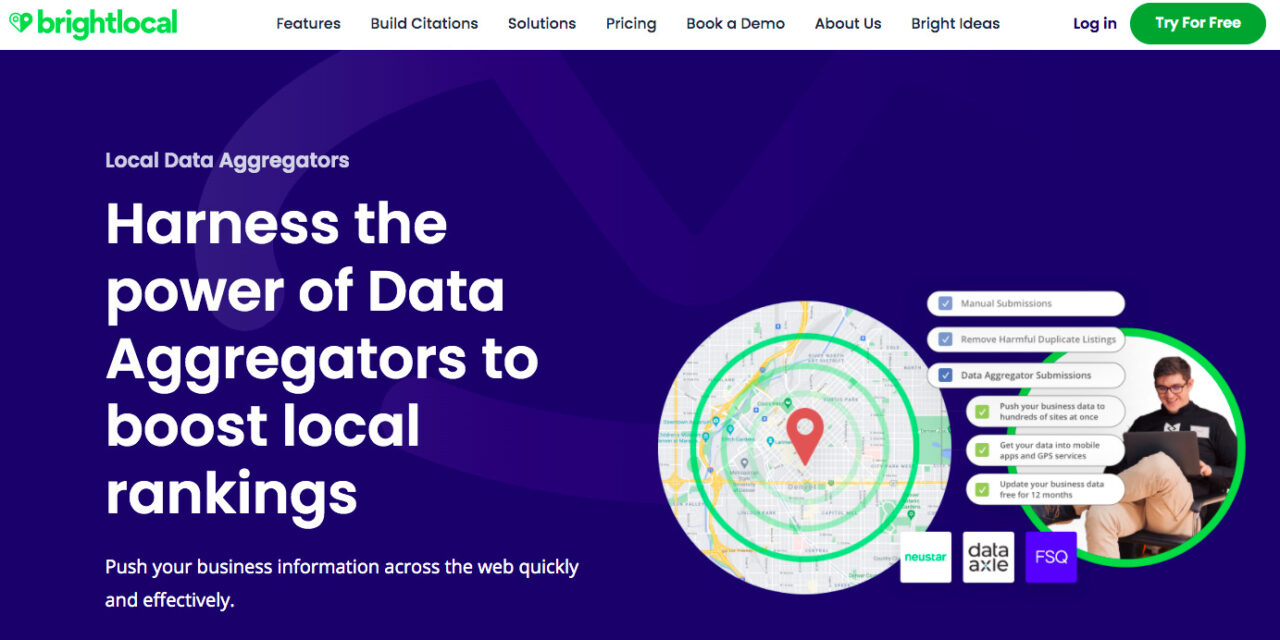
From that point on, local search listings should be accurately and automatically updated by your management or online marketing service. Remember to change all local listings if something changes—particularly when you move office, switch telephone numbers, or are closed for a holiday!
Dive Deeper: The Complete Guide to Google My Business
B) Build and Optimize Local Landing Pages
Let’s think about the search terms people use when looking for local services. Chances are, they look something like this:
- “SEO services in Los Angeles”
- “Best blow dry in Manchester, UK”
- “Where to buy candles in New York”
The only way to make sure you’re reaching the shortlist of Google’s SERP rankings is to actively target those keywords on your website — preferably with a local landing page.
Look at the top organic results for a local keyword:
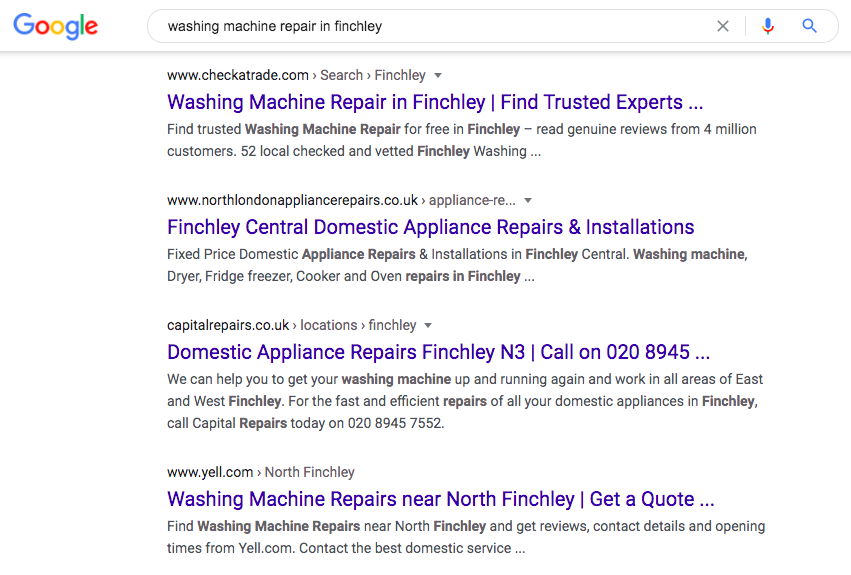
Notice how all the results belong to the Finchley area rather than a home page or general “washing machine repair” service page. You need to create these landing pages by:
- Doing keyword research to find local keywords relating to your product or service.
- Creating a new page on your website and optimizing it for those local keywords. That includes mentioning the phrase in your meta title, meta description, page title, heading tags, image alt text, and on-site content.
- Building links from local directory listings to that page to strengthen location-based keyword rankings (e.g., if you’re creating a landing page for London, build links from London-based directories to the landing page’s URL).
Dive Deeper: The Ultimate Guide to Creating a High-Converting Landing Page
C) Technical SEO for Local Search
Carrying out technical search engine optimization for local search is a similar process to that discussed earlier, but here are some useful terms and techniques to ensure that you optimize your business for local searches.
Schema markups are brief snippets of data that provide extra information to users and search engines. Best of all, schema markups don’t require coding knowledge and can be inserted through Schema.org, a rare collaboration between Google, Yahoo, and Bing.
Schema is used on a listing that gives local searchers extra information about the venue’s hours, location, general information, and more without actually visiting the page itself.
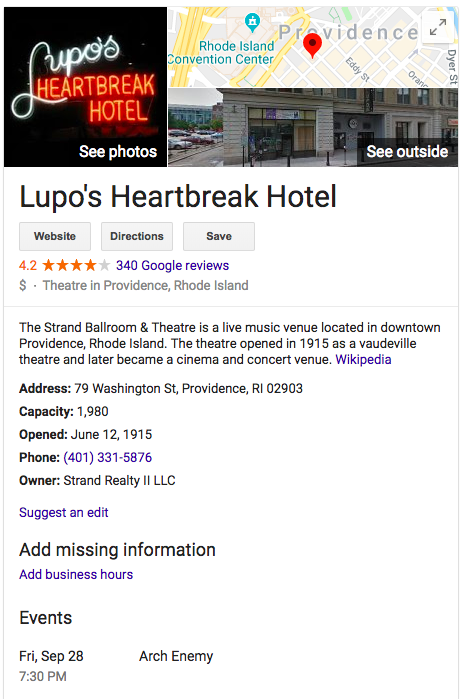
If you want to go a step further, you can also include a JSON (Javascript Object Notation) injection through Google Tag Manager. With Google Tag Manager, it’s easy to combine schema and JSON to boost the strength of your schema further, resulting in a higher CTR and visibility.
Granted, the learning curve is a bit steep for those who aren’t familiar with Javascript or any other basic programming language, but once set in place, JSON injections can help execute and put structured data in place simply and efficiently.
Dive Deeper: The Complete Guide to Local SEO
15) Focus on High-Intent Keywords
Once again, we’re going to sneak a section in on keywords even though earlier we said “To rank your website on the first page of Google, it’s not enough to look at keywords alone.”
We still stand by that, but this is specifically about high-intent keywords.
When your leads reach the bottom of the sales funnel, they’ve worked through a process of education, and now their search intent suggests they’re almost ready to make a buying decision.
Broadly, search intent can be categorized into:
- Informational
- Navigational
- Commercial
- Transactional
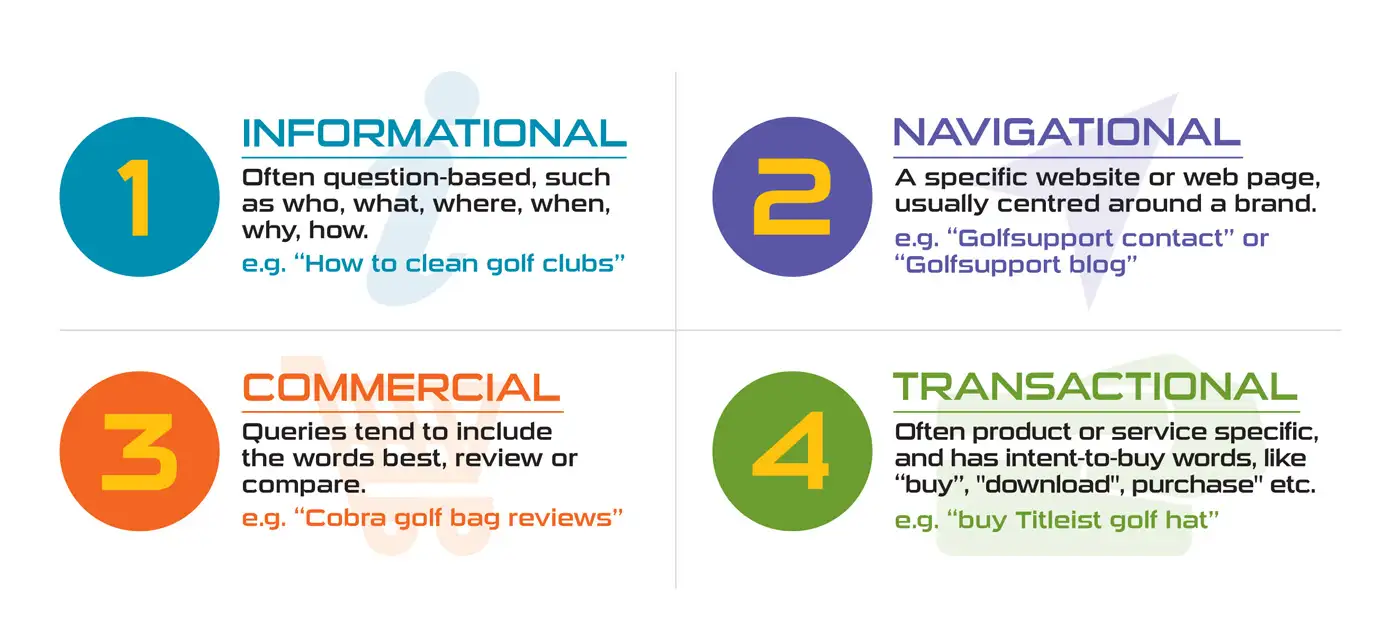
Of the four types, commercial and transactional can be considered high-intent keywords.
If you choose to focus your content efforts on those areas, you can:
- Be more aggressive with CTAs (e.g. “get a quote” instead of “download this cheatsheet”)
- Expect a higher conversion rate
- More accurately attribute leads & revenue to your content
If your goal is to manage SEO efforts for short or medium-term ROI on your content, high-intent keywords are the way to go, and you can discover them with keyword research.
Dive Deeper: How to Create Intent-Based Content to Improve Conversions
16) Implement E-E-A-T Content
In December of last year, Google changed its Quality Rater Guidelines (QRG). Previously, Google focused on E-A-T (expertise, authoritativeness and trustworthiness) content.
Now, Google has added the extra E (experience), making the acronym E-E-A-T.
This extra E indicates that the writer has first-hand experience in the topic. This can include actually testing a product for a review or giving a unique, real-world take on a common trope.
For Google, experience proves that the website and content creator are reputable. Evaluating experience also reduces harmful posts – especially since 90% of young adults have been exposed to negative content such as hate speech, bullying and fake images.
Here’s how to ensure that you put the extra E in E-E-A-T:
A) Publish High-Quality “About” Pages and Author Bios
Your “About” page is your chance to boast. Tell readers (and Google) why they should listen to what you have to say. Consider detailing:
- Formal qualifications like a degree or certifications
- Your career experience
- Testimonials and case studies
- Your speaking and writing experiences
B) Implement a Robust Content Review Process
To be trustworthy and authoritative, your content needs to be up to date and accurate.
The frequency at which you update content might depend on the topic. You may need to review fast-moving trends daily or weekly. For YMYL (Your Money or Your Life) topics, like finance and medicine, you may need to check every 3-6 months that your advice is still accurate:

For other topics, yearly may be enough. You can judge this case by case. Also, be sure to vet any sources that you link out to. Make sure that they, too, are updated, reputable sources.
C) Build More Backlinks
If others in your industry cite your work as a resource, it’s a good sign you’re an authority to be trusted in that niche. Google will take note of this; backlinks are still a vital SEO ranking factor, improving website traffic and SERP visibility.
Backlinks are more than links from other websites – social media shares and mentions are an integral way to enhance authority. If your content helps a user, they’re more likely to share your post on social media. This can lead to an increase in website traffic, translating to higher SERPs performance.
So invest some time into creating great content and building the right relationships, and you’ll earn quality links.
Dive Deeper:
* 4 Ways to Signal to Google that You’re an Expert Content Creator
* The Ultimate Guide to Link Building with Content for SEO
* Google’s Search Quality Rater’s Guidelines: Ensure that Your Site Gets a High Quality Rating! [infographic]
Keeping Up with SEO
SEO is an ever-evolving field, so it’s important to keep up with the latest changes and trends. To stay on top of these changes, spend time on the fundamentals of quality website content creation, technical trends, internal and external links, site speed, and schema. Avoid common pitfalls, such as duplicate content.
However, you don’t need to implement every single new technique immediately. Just focus on a few SEO strategies that make sense to your business at first, and you’ll see a big difference in your site’s click-through rates, engagement, and, of course, rankings.
If you’re ready to boost your online visibility, Single Grain’s SEO experts can help!👇
The post 16 Effective SEO Techniques to Drive Organic Traffic in 2024 appeared first on Single Grain.

